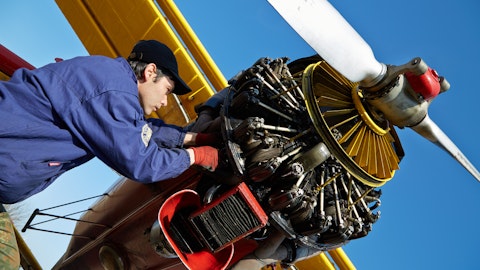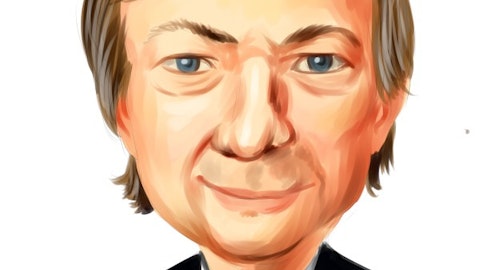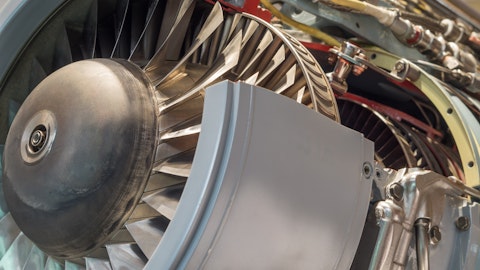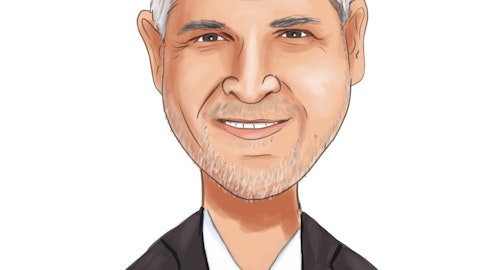Tom Gentile: So, Cai, as we said a little bit earlier, cash flow in Q1 is going to be our toughest quarter. And then the cashflow in Q2, Q3, and Q4 should be positive. That’s the pattern that we are anticipating. Normally, the Q1 is our hardest because of several one-time cash payments that happen just in the first quarter from a seasonality standpoint. In terms of the production level for January, 33% is a run rate projection. As we said, we’re going to produce about 420 MAX units for 2023. The plan for Q1 is about 105. So, it’s just basically right on schedule throughout the year. We do expect some rate breaks in the back half of the year. But the total, again, is 420 units with 105 in Q1, and we started off the year with 33 in January.
Cai von Rumohr: If you mentioned the one-timers in the first quarter, could you give us some color on what those are because interest basically is — gets hit in the second and fourth quarter. Thank you.
Mark Suchinski: Yes. Sure Cai. I mean the first quarter always is typically from a seasonality standpoint, our worst cash flow. A lot of that has to do with shutting down production at the end of the year. And so what happens is, we start off the year, we pay bills but we go the first week or two without any cash receipts from all of our customers. And so I would say that is the biggest negative as it relates to our seasonality in the first quarter. Last seven to 10 days of the year, we don’t make any deliveries. And therefore, it takes a couple of weeks for us to start delivering units and starting to get paid. And so cash receipts are always the lowest in the first quarter, but you still have 13 payment cycles in the first quarter, and therefore, that’s what puts overall pressure on our cash flow.
There’s some incentive-related type compensated related things that get paid out in the first quarter that don’t repeat. But you’re correct. As it relates to the big headwinds on cash as it relates to interest is going to occur in the second and fourth quarters.
Cai von Rumohr: Thank you so much.
Operator: Thank you, Cai. Our next question comes from Sheila Kahyaoglu from Jefferies. Sheila, your line is now open.
Sheila Kahyaoglu: Hi, thank you. So, I just wanted to ask us — thanks guys. How are you thinking about the cash burn on the 787 just given the forward losses and what the contribution is in 2023, given the target to deliver between 40 and 45 shipsets. Can you hear me?
Tom Gentile: Yes. So, as we’ve said — yes, 787 cash burn. 787 right now still continues to burn cash on a per unit basis. Part of it is related to Boeing advance from several years ago that we send with each shipset. So, it’s about $450,000 per unit. And then on top of that, as I mentioned, with this new fit and finish, the set of requirements in the build process, is resulting in some more hours, which is creating some further drag in terms of the overall 787 program. We’ve reflected that in the forward loss that we announced in this quarter. But the 787 does continue to be a challenging program. We do have a price step-up at line unit 1405, where we go up to a higher price with Boeing. But until then, the program is going to continue to be negative as we continue to work our cost reduction programs.





